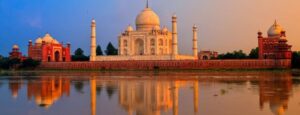
Mumbai to Mumbai Taj Mahal Tour
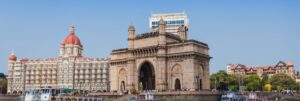
Good morning Mumbai
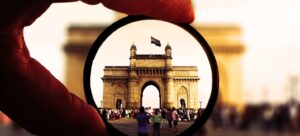
Half-day city tour of Mumbai
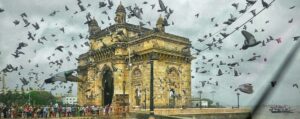
City tour of Mumbai
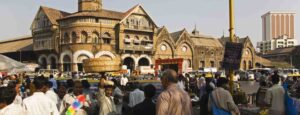
The cave temples of Elephanta island
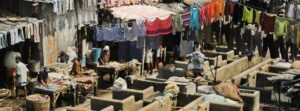
The Elephanta caves and the city of Mumbai








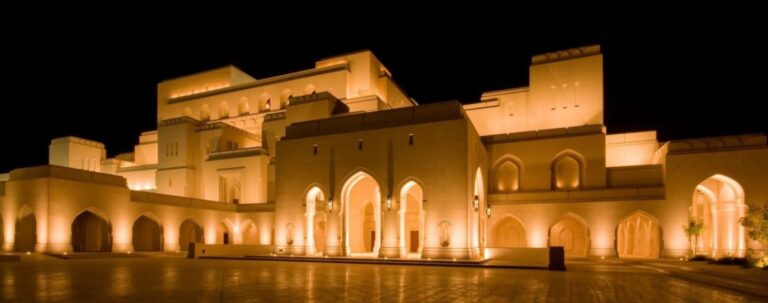
Tour in Oman, Welcome to Muscat! Upon arrival in Muscat, after Immigration clearance and baggage collection proceed to the arrival hall to meet the chauffeur and proceed to the Hotel. Overnight in Muscat.
DAY 2, Muscat – Nizwa – Jebel Akhdar
Today after breakfast, proceed to Nizwa. Nizwa boasts of the famous Round Tower Fort, built in the 17th century, and its Souq renowned for its Friday cattle auction, intricately hand-carved “Khanjars” (daggers) & ornamental silver jewellery. Later, proceed to Jebel Akhdar where there is a check post. From here a 36 km stretch of winding road takes one to Jebel Akhdar (2000 mts above sea level) the green jewel of the Al Hajjar mountain ranges, a truly unique spot in the Arabian Peninsula. Enjoy the cool climate up in the mountains. Al Jabal Al Akhdar is famed for its fruit orchards typically laid out terrace style along the slopes of mountains, which are endowed with natural springs and aflaj. The villages of Saiq, Wadi Bani Habib (the village of the old houses) visit to village roose & Al Ain dot the landscape. The villages overlook a spectacular landscape of dramatic peaks , gorges and wadis. The roses of Jabal Al Akhdar fill the air with fragrance when in full bloom (March / April). Rose water is distilled in the homes of the villagers. Lunch at the Sahab hotel in Jebel Akhdar. (It is advisable to wear light comfortable clothing and walking shoes). Overnight in Jebel Akhdar
Today after breakfast, proceed to The Wahiba Sands, a vast mass of undulating red and white sea of sand and dunes rising up to 200 meters are also host to a variety of flora and fauna. The ever-changing patterns of the dunes are a photographer’s delight. Experience a roller coaster like feeling as our experienced drivers drive you over the dunes. The Wahiba Sands is also home to the traditional Bedouin tribe who are known for their hospitality and their knowledge of the sands. You will stop by a Bedouin family in their traditional and simple habitat.
Enjoy dune driving before leaving the desert. From Mintrib proceed to Bilad Bani Bu Ali and drive along the coastline to Ras Al Junayz the turtle breeding site. Arrive at Ras Al Jinz Scientific Centre and check in. Later head on to a short walk to the beach in the night to watch the turtles nestling on the sands. Overnight stay at Ras Al Jinz Scientific Centre.
Today after breakfast, proceed to Muscat enroute stopping at Sur to visit The Dhow factory (photo stop) & fish jetty. Drive via scenic and rugged coastal route to Muscat. Stop at Fins beach. Your next stop is the Bimah Sinkhole, a spectacular limestone crater with blue green water at the bottom. On clear sunny days while driving along the coast one might chance to see sharks in the deep blue water or fleet footed Gazelle sprint across the landscape. Evening is free at leisure in Muscat. Overnight in Muscat.
Today after breakfast, you will be pickuped from the hotel to visit the Grand Mosque (not possible on Friday & other public holidays), highlight of the Muscat city. Later visit Royal Opera House Muscat and Bait Al Zubair Museum. Drive along the waterfront Corniche visiting the bustling Muttrah Souq. Later, proceed for a photo stop to the magnificent Al Alam Palace, official palace of His Majesty Sultan Qaboos flanked by the 16th century Portugese forts Mirani & Jalali. Rest of the day at leisure. (Kindly note, ladies to be fully covered and to carry a head scarf and men should wear trousers). Overnight in Muscat.
Today after breakfast, you will be transferred from the Muscat hotel to the Marina to embark on a boat as we search the seas for Dolphins and Whales. Watching wild dolphins is a thrilling way to start the day and the lucky may even come across one of the many species of whales that can be found just a few kilometres from Muscat’s rugged coast. Not every trip guarantees a sighting, but you are sure to enjoy a trip out to sea and enhance your knowledge of nature’s most fascinating marine mammals. Rest of the day at leisure. Overnight in Muscat.
Today after breakfast, check out of the hotel and transfer to International Airport in Muscat for your flight back home.
Program Preview
Ahmedabad-Champaner-kevadia-vadodara-Lothal-Bhavnagrar-Palitana-Diu-Somanth
Sasan Gir-Junagarh-Gondal-Rajkot-Bhuj-Dhordo
Dasada-Modhera-Patan-Ahmedabad
Arrival at Ahmedabad International Airport. Once the immigration procedures have been completed and the baggage has been withdrawn our operator will wait for you outside the Terminal for the transfer to the hotel.
Arrival at the hotel and check-in. Standard Check in 14:00 / Check out 12:00
Today we visit The Jain Temple, Sarkhej Roza, Local Market.
The Jain Temple The construction of the temple was started originally designed by Shet Hathisinh Kesarisinh, a wealthy merchant from Ahmedabad who died at 49 years old. The construction was supervised and completed by his wife Shethani Harkunvar. The total cost was around 8.00.000, therefore a greater sum. The temple is dedicated to Lord Dharmanatha, the fifteenth Jain Tirthankar.
Sarkhej Roza includes one of the most elegant and unique architectural complexes in Ahmedabad. In his architecture, Sarkhej Roza is an example of the first Islamic architectural culture in the region, which blends Persian’s Islamic stylistic influences with Hindu and Jainist features to form an “Indo-Saracenic” architectural style. The architectural style of Sarkhej Roza is a precursor of the Mughal period in a true fusion of Hindu, Jain and Islamic styles. Hindu art and construction know-how were superimposed on the Islamic sense of geometry and scale. The Roza complex in Sarkhej was built at the advent of the sultanate era.
Local market. Being the largest city in Gujarat, Ahmedabad is quite famous for its local markets. The people of Ahmedabad love spending their time and money on shopping due to a variety of items available in the market.
Overnight at Hotel in Ahmedabad
After breakfast the day starts at 8:30 AM
Visit the city visiting Gandhi’s ashram, the Jamaican mosque,
Gandhi’s ashram, the Sabarmati Ashram (also known as Gandhi Ashram, Harijan Ashram or Satyagraha Ashram) is located in the Sabarmati suburb of Ahmedabad, Gujarat, adjacent to the Ashram Road, on the banks of the Sabarmati River, at 6.5 Km from the town hall. This was one of the many residences of Mahatma Gandhi who lived in Sabarmati (Gujarat) and Sevagram (Wardha, Maharashtra) when he was not traveling through India and was not in prison. [1] He remained in Sabarmati and Wardha for a total of twelve years along with his wife Kasturba Gandhi and his followers, including Vinoba Bhave. The Bhagavad Gita was recited here every day, as part of the Ashram program.
The Jama Jama Masjid mosque (literally Friday Mosque), also known as the Jumah Mosque, is an Ahmedabad mosque, built in 1424 during the reign of Ahmed Shah I. Located in the old fortified city, the mosque is located outside the Bhadra area Fort, along the south side of the road that stretches from Teen Darwaza to Manek Chowk.
Adlaj Stepwell Located in the quiet village of Adalaj, this has served for many years as a resting place for many pilgrims and caravans along their trade routes. Built in 1499 by Queen Rudabai, wife of the chief Vaghela, Veersinh, this five-story building was not only a cultural and utilitarian space, but also a spiritual refuge. It is believed that the villagers would come every day to fill the image, offer prayers to the gods carved into the walls and interact with each other in the cool shade of the vav. There is an opening in the ceilings above the landing that allows light and air to enter the octagonal well. However, direct sunlight does not touch the ramp or landings, except for a short time at noon.
The Calico Museum of textiles, (The visit is booked at your request) under the auspices of the Sarabhai Foundation, is India’s main textile museum. His collection of Indian fabrics is considered by many to be the best and most complete in the world. The fabrics, together with the extraordinary collection of bronzes from southern India of the Sarabhai Foundation, Vaishnava picchavais, Jain art and miniature paintings, are housed in The Retreat, located in the Shahibaug area of Ahmedabad. The Foundation organizes a museum tour of the collections every day and offers a wide range of textile and other publications.
Overnight at hotel in Ahmedabad
After the first breakfast, departure for Champaner
The Champaner-Pavagadh archaeological park, a UNESCO World Heritage Site, is located in the Panchmahal district of Gujarat, India. It is located around the historic city of Champaner, a city built by Sultan Mahmud Begada of Gujarat. The heritage site is dotted with fortresses with ramparts that start from the Pavagadh hills and extend into the town of Champaner. The landscape of the park includes archaeological, historical and cultural heritage monuments such as Chalcolithic sites, a hilltop fortress of an ancient Hindu capital and remains of the 16th century capital of the state of Gujarat. There are palaces, gates and entrance arches, mosques, tombs and temples, residential complexes, agricultural structures and water installations such as wells and basins, dating from the 8th to the 14th century. The Kalika Mata temple, located atop the 800-meter-high Pavagadh hill (2,600 feet), is an important Hindu shrine in the region, which attracts large numbers of pilgrims throughout the year.
We leave for the visit of Chotta Udaipur
Chhota Udaipur shares its proximity to several villages of Rathwas, Bhils, Bhilalas and other tribes. Tribals can be seen in colorful clothing and thick traditional jewelry. A trip to the village and tribal villages gives an idea of the traditional lifestyle, architecture and crafts of every indigenous community.
Overnight in Chhota Udaipur
After breakfast, departure to visit the tallest statue in the world
Arrival and visit of the statue of the unit
The Statue of Unity is a colossal statue of the Indian statesman and independence activist Sardar Vallabhbhai Patel (1875-1950) who was the internal prime minister of independent India and the principal adherent of Mahatma Gandhi during the non-violent movement of Indian independence. Located in the Narmada district of Gujarat, the tallest statue in the world (about 600 feet), it is only 3.5 km from the town of Kevadia and about 90 km from Vadodara.
For Gujarat tourism, which already has the Great Rann of Kutch and the Gandhi circuit as great attractions, the Statue of Unity is being added to the list. To get the best view of the picturesque surroundings of the Statue of Unity, you will have to go to the observation deck at a height of about 400 feet near the chest of the Sardar Patel statue using high-speed elevators. This offers a panoramic view of the entire Narmada river, the surrounding hills and the dam.
In addition to the statue itself, there are many other tourist attractions around including the valley of flowers, the natural beauty of the Satpura and Vindhyachal mountain ranges in addition to the Sardar Sarobar dam on the mighty Narmada river.
Overnight at the hotel in Vadodara
After breakfast the day starts at 8:00 AM
Sayaji Bag, is a garden located in Vadodara, Gujarat, India. Also known as “Kamati Baug”, it was built by Maharaja Sayaji Rao Gaekwad of Baroda. The largest garden in western India with an area surrounding more than 100 acres. The largest floral clock in the world and India.
Palace of Nazarbaug – The Nazarbaug palace or Nazar Bāgh palace was the royal palace of Gaekwad in the city of Vadodara, in the state of Gujarat, in western India. The Nazar Bāgh palace was built in 1721. It had three floors and is the oldest building in Baroda. It was built by Malhār Rāo Gaekwad at the end of the 19th century. This palace was used on ceremonial occasions by the Gaekwads. Until recently, it housed the relics of the royal family. It had solid gold and silver guns, each weighing over 100 kg. The motifs also contain the Shïsh Mahal, a glass palace.
Kirti Stambh and / or Baroda Museum. Kirti Stambh is one of the most famous landmarks in the city, located near the Polo Ground. It is made of pink stone from Songadh and stands in front of Nehru Bhavan. The landmark was built to celebrate the 60th anniversary of the reign of Sayajirao Gaekwad III in 1935. Perched on top of the landmark is a lion facing east. However, many citizens know the reasons behind the construction of Kirti Stambh, not many are aware of the philosophy behind the structure.
Departure for Bhavnagar visiting the archaelogical site of Lothal
Lothal – was one of the southernmost cities of the ancient Indus Valley Civilization, located in the Bhāl region of the modern state of Gujarāt and first inhabited c. 3700 BC Discovered in 1954, Lothal was excavated from 13 February 1955 to 19 May 1960 by the Archaeological Survey of India (ASI), the official agency of the Indian government for the conservation of ancient monuments. According to the ASI, Lothal had the first known pier in the world, which connected the city to an ancient course of the Sabarmati river on the trade route between the cities of Harappan to Sindh and the Saurashtra peninsula when the Kutch desert of today was part of the Arabian Sea. However, this interpretation was challenged by other archaeologists, who claim that Lothal was a relatively small city and that the “basin” was actually an irrigation reservoir. The controversy was finally resolved when scientists from the National Institute of Oceonography, Goa discovered foraminifera (marine microfossils) and salt, gypsum crystals in the rectangular structure clearly indicating that seawater once filled the structure.
Arrival in Bhavnagar and transfer to the hotel
After breakfast
Departure for Palitana, the gateway to Shatrunjaya Hill and one of the most holy Jain pilgrimage sites. There are about 863 temples on the top of the hill that were built over 900 years and are elegantly carved in marble. After reaching the top, you will visit the Jain temple, which is dedicated to Shri Adishwara; the first Jain Tirhankara (apostle). This temple is one of the most magnificent and sacred temples in Shtrunjaya hill. Also, we will visit the Chaumukha or the four-sided temple. This temple has an image of Adinath facing the front cardinal direction.
Overnight at the hotel in Palitana
After breakfast at 8:00 AM.
Departure to Diu, Arrival in Diu and transfer to the hotel
Free day to explore Diu and its famous beaches like Nagoa beach.
Diu is a coastal city at the eastern end of the island of Diu, India. A bridge connects the island to the state of Gujarat. Overlooking the Arabian Sea, the Diu Fort, a 16th-century Portuguese citadel, features a lighthouse and cannons
Overnight at the hotel in Diu.
After breakfast at the hotel.
Departure to Somnath – The Somnath temple located in Prabhas Patan near Veraval in Saurashtra on the west coast of Gujarat is believed to be the first of the twelve jyotirlinga shrines of Shiva. It is an important place of pilgrimage and tourism in Gujarat. Destroyed and rebuilt several times in the past, the present temple was rebuilt in the Chaulukya style of Hindu temple architecture and completed in May 1951.
Departure to Sasangir. Upon arrival at SasanGir, transfer to the camp. Have fun on a safari in the Gir National Park
Gir Forest National Park is a wildlife sanctuary in Gujarat, western India. It was established to protect Asian lions, who attend the fenced-in Devalia Safari Park, along with leopards and antelopes. Gir Jungle Trail, outside the fenced area, runs through the deciduous forest and is home to wild animals including vultures and pythons. The Kamleshwar Dam has crocodiles and marsh birds, such as Indian skimmers and pelicans.
Overnight at hotel in Sasan
After breakfast, the day begins
Departure for Junagarh,
Arrival and visit
The Uparkot fort built in 319 BC from the Mauryan Chandragupta empire, Uparkot is an ancient fort in the heart of Junagadh. Over 2300 years, with walls up to 20 m high in places, Uparkot is what has allowed Junagadh to withstand a 12-year siege at one point. In the fort, you can see relics and ruins of a different phase of history, including the Hindu, Muslim and Islamic influence that passes through. Among the princely states, Junagadh was the most powerful kingdom in the Saurashtra region and had survived the harsh campaigns of Muhammad Tuglaq and Ahmad Shah.
Mausoleum of Mahabat. Mahabat Maqbara Palace, also Mausoleum of Bahaduddinbhai Hasainbhai, is a mausoleum of Junagadh, in India, which once housed the Nawabs Muslim rulers of Junagadh. It was built by Nawab Mahabat Khan II of Junagadh (1851-1882).
Departure for Gondal, arrival and visit,
The Navlakha palace The oldest and most beautiful palace in Gondal is the Navlakha palace. Built in the 17th century, this palace is an architectural marvel with stone sculptures and splendid balconies. The place also has a wonderful collection of antiques, gifts and memorabilia from the princely times. The most unique exhibit element is the scales on which it has been measured with respect to gold and silver on its anniversaries.
Real Garage For car lovers, the Royal Garage is a must see with its vast collection of classic and classic cars including a 1930s Daimler, a 1935 Mercedes, a 1935 Packard two-door convertible, the Cadillac of 1941 and 1947, the Cadillac Limousine of 1955, sports cars of the 50s and 60s such as the Mercedes 300 SL, the Jaguar XK 150 and the Chevrolet Camaro, numerous impressive American cars of the 40s and 50s, a fleet of four-wheel drive vehicles from World War II and the post-war period and some contemporary sports cars.
Departure for Rajkot, Arrival and transfer to the hotel.
Overnight at the hotel in Rajkot
After breakfast Departure for Bhuj
Arrival in Bhuj and visit
Aina Mahal -The Aina Mahal palace, or “Hall of Mirrors”, was built during the flamboyant government of Lakhpatji in the mid-18th century. The master craftsman Ramsinh Malam, who trained as a craftsman for 17 years in Europe, did not feel appreciated by the smaller rulers of the area, so he went to the royal court in Bhuj and appealed to the king for work, who commissioned this palace. Malam designed it in a mixed Indo-European style and began to create materials for the palace locally.
Prag Mahal is one of the architectural wonders of India. Built in the 19th century, it is located near the famous Aina Mahal and is located in the heart of the city, making it easily accessible. The grand palace has Gothic style windows and Corinthian pillars around it. The foundation of this historical monument can be traced back to the time after the British visited India and spread their influence throughout the Bhuj. Imposing and beautiful in itself, the shining palace is made mainly of red sandstone. There are intricate incisions made on the walls with beautiful works of art, and the most surprising thing is the jaali work on jharokhas, those are of exquisite appearance.
The Kutch Museum was initially established as part of the School of Arts founded by Khengarji III, the Maharao of the Cutch State. It was founded on 1 July 1877. The museum was formerly known as the Fergusson Museum.
At the time of the marriage of Maharao Khengarji III, on February 19, 1884, many new objects were received and a new building was needed for the exhibition. As such, on November 14, 1884, the foundation stone for the current museum building was laid by the governor of Bombay, Sir James Fergusson, and was given the name of Fergusson Museum by Maharao of Cutch.
Ramkund Stepwell is a square-shaped well with a distance of 56 feet on the side that carries the sculptures of characters such as Lord Rama, Devi Sita, Lakshman and Lord Hanuman of our great old Ramayana epic. He also has 10 incarnations of our Lord Vishnu scattered through the walls.
Sharad Baug was the residence of the royals until Madansingh, the last king of Kutch who died in 1991. After being transformed into a museum now, it does not only house splendid artifacts, but the grounds of the sumptuous building have an attractive collection of flowering and medicinal plants due to which some migratory winged visitors stop on the spot every year. The building is open to the public six days a week, except for Friday
Royal Cenotaphs The umbrella-shaped domed structures are popularly known as Chhatris in India, built in memory of the royals. These are commonly found in Rajasthan and some parts of Madhya Pradesh and Gujarat that are linked to the lineage of the Rajputs. The Chhatris in Bhuj were built in the 18th century by the ruler of Jadeja Rao Lakhpatji. The one with a blue dome is dedicated to him, with bejeweled works strongly influenced by Turkish architecture. The structures were severely damaged by the Bhuj earthquake in 2001 and are currently being renovated, albeit at a slow pace. Walking between building material, boulders and stones we found stones that depicted royalty and images of gods and goddesses. Some of them have been exquisitely carved and you begin to wonder if they are honored as they should be.
Overnight at the hotel in Bhuj
After breakfast the day starts at 8:30 AM
Village of Banni The last village on the border is a desert of infinite dimensions, and at its center, picturesque villages suspended in time. Here you will meet the master craftsmen who exhibit their traditional art, transforming our masterpieces every day. Their ornaments, clothes, tools, everything they use – will make you feel like you have entered the lifestyle museum and left you spellbound.
Village of Dhordo The last village on the edge of an infinite deserted dimension, and in the center, picturesque villages suspended in time. Here uncontrolled and masterful artisans who sponge the traditional art parrot, transforming and our masterpieces every day. The parrot ornaments, clothes, utensils, everything that is laid out – will make you feel like you have entered the lifestyle museum leaving you spellbound.
Departure for Rann of Kutch
Rann Utsav is a fantastic festival in Kutch, Gujarat, India. It is a carnival of music, dance, beauty of White Rann’s nature and much more than when you visit under the full moon. Kutch Rann Utsav is the shimmering landscape that offers the enchanting moments of this Fest, which during the Festival feels like Paradise on Earth. In fact, it’s a family vacation destination to explore fun moments and store them in cameras for life. Announced the official dates of Rann utsav, from October 28, 2019 to February 23, 2020. Here are a lot of things to do during the festival, including participation in the Golf Cart, ATV Ride, Camel Cart Excursion, Paramotoring, Meditaiton , Yoga and Enjoying Gujarati culture
Overnight in camp at Rann of Kutch
After breakfast we visit
Ajrakhpur village Ajrakhpur is known worldwide for the art of Ajrakh, block printing uses colors derived from nature, such as indigo, henna, curcuma, pomegranate, iron and mud. In some cases, the tissues are washed up to 20 times.
Bhujodi village – A small town just 8 km southeast of Bhuj, Bhujodi is an important textile center of Kutch, with the vast majority of the 1200 inhabitants involved in textile handicraft production. Here you can meet weavers, tie-dye artists and block printers, many of whom belong to the Vankar community.
Departure to Little Rann of Kutch, Arrival and transfer to the hotel
After breakfast, the little Rann’s Safari is held
The little Rann also hosts various unique mammals in addition to the wild ass like the Indian wolf, the desert fox and the nilgai. Although it is a desolate landscape, it is rich in biodiversity. It is an ecologically important area for wildlife. Many local and migratory water birds such as cranes, ducks, pelicans, flamingos and land birds such as sandgrouse, francolini and Indian sea lions.
Know the customs, culture and traditions of the community. Desert Safari in Forest escorted by experts. Get the chance to explore Wild Ass (the only habitat in Asia), the desert fox, interesting birds, etc. It is just as exciting to see the sun set over Rann. Night walk, star gazing and bonfire. Join with friends and family. Eco-friendly Forest Safari escorted by the locals. This will be a walking safari assisted by the locals. They will share their knowledge about the forest. Visit to the salt pans. Meet the salt workers – Agariyas. Interact with them and find out why they are part of this profession. Listen to the challenges they face, their daily chores, etc. Participate in the braking activity of sweat salt plowing. Volunteer at the Village School to educate the children of Agariyas. Learn local embroideries made in a creative way by hand-sewing glasses and bees on the cloth by a local woman.
We leave for Patan. Along the way, we will stop at Modher, famous mainly for the ancient temple of the sun,
Modhera is an ancient village in the state of Gujarat, famous for housing the remains of the Sun Temple built by the Chalukya dynasty and a true historical treasure. The village is surrounded by a mystical aura that the Temple of the Sun brings with it, it is also a center for spirituality and culture. Modhera gives you a glimpse of the glory days of the royal lineage of the Chalukyas and is one of the best testaments of the architectural excellences of the past. If history attracts, this place is perfect for you, with the village deep in relics, structures and historical legends.
Overnight in Patan at the hotel
After breakfast, visit
Rani Ka Vav or the Queen’s stairwell is a distinctive form of water storage system located in the small town of Gujarat called Patan, on the banks of the Saraswati river. Considered the largest pass in the state of Gujarat, Rani ka Vav was built between 1063 and 1068 AD in the Chalukya dynasty as a memorial to Bhimdev Solanki from his widow Queen Udaymati. Recently listed as a UNESCO World Heritage Site on June 22, 2014, this passage well embodies the peak of the Maru-Gujarat architectural style.
In the old days, the well water had medicinal properties that helped ward off diseases like viral diseases and fever. The well was dug in the 1960s in a well-protected state because it was buried under the crack for sanctuaries. Besides being a water storage system, it is also known for its intricate sculptures carved on pilasters that amount to about eight hundred mainly based on the theme of Lord Vishnu. Furthermore, Rani Ka Vav was an important center for socializing among locals and taking refuge from the heat. It is an excellent example of how to transform something functional into a work of art.
The Visit of Siddhpur The city is a revered destination, lined with temples, kunds, ashrams and other sacred structures. Around the tenth century, under the rulers of Solanki, this city was at the height of glory and glory. Named after the great ruler of Gujarat, Siddhraj Jaisinh of the Solanki dynasty.
Raja Siddhraj built a magnificent temple dedicated to Shiva called “Rudra Mahalaya” in the 12th century AD The temple was an architectural marvel with a three-story “shikhara”, 1600 columns, 12 entrance doors, central “mandapa” and porticoes to the east, north and south and sanctuary to the west. Around the temple there were 11 shrines of Rudra. The eastern gate was adorned with beautifully carved “Toran”, with a flight of stairs leading to the Saraswati river. The temple ornament was exuberant, as evidenced by the elaborate and detailed pillar sculptures and the beautiful Toran, which are the only remains of the temple today.
Departure to Ahmedabad,
Arrival and transfer to the hotel in Ahmedabad
Transfer to Ahmedabad airport according to flight schedule
Ciao India Tours wishes you a Happy journey